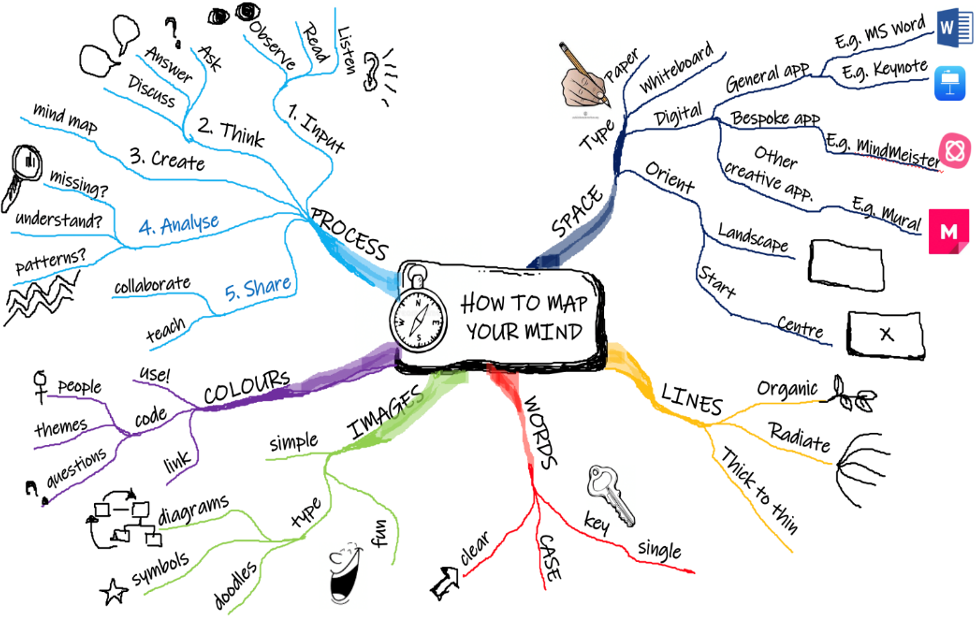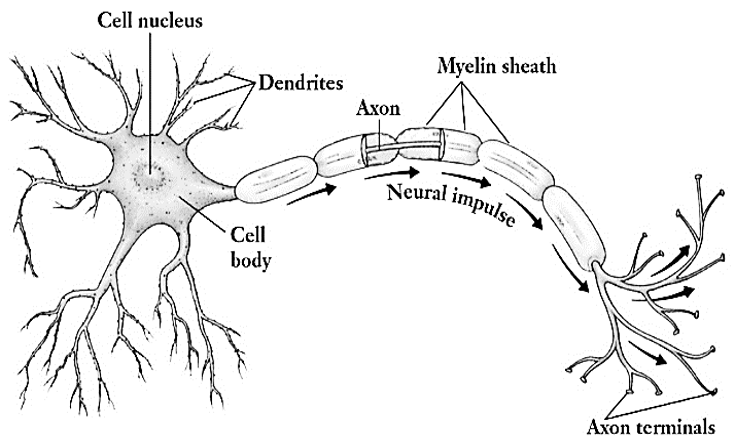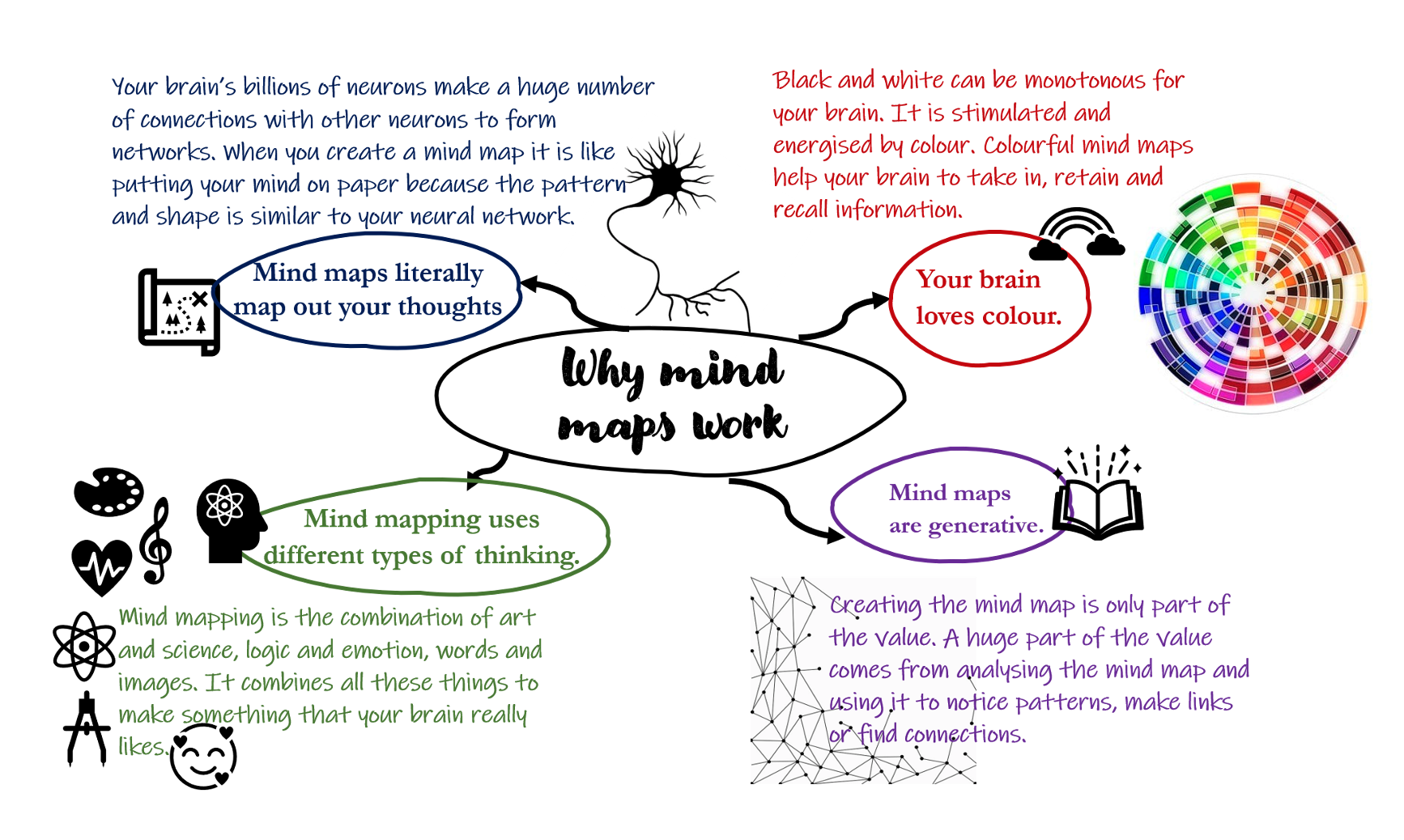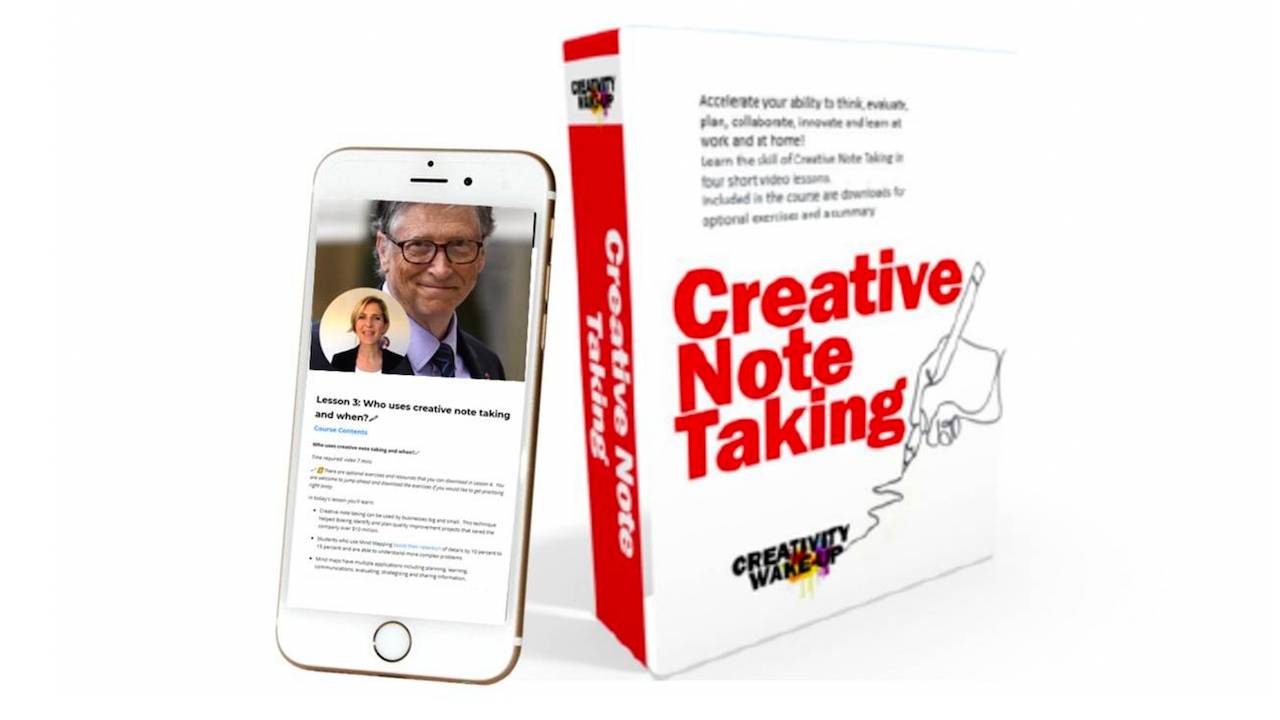Start using creativity-enhancing mind mapping
The mind mapping skills that Nessa Temlett learned on our Creativity Wake-Up workshop was the inspiration for her thriving landscaping business. She told us that the mind maps that we practiced in the workshop reminded her of succulent plants, with their whorls of radiating leaves. She used the mind mapping techniques to plan her new landscaping business, which is now flourishing. She named her new business, Flourish Gardens by Nessa, and she specialises in succulent and water-wise plants. Nessa says that she continues to use mind mapping to brainstorm new ideas, products and to plan new projects.
It all started with a mind map!

Nessa's successful landscaping business started with this mind map.
“A Mind Map is the ultimate organisational thinking tool. It is the easiest way to put information into your brain and take information out of your brain. It is a creative and effective means of note taking that literally 'maps out' your thoughts,” Tony Buzan, author and cognitive educator.
In todays complex and fast pace world, most people are looking for ways to advance their businesses and improve their thinking and organisational skills. 95% people experience major problems in areas such as thinking, memory, concentration, motivation, structuring of ideas, decision making and planning. Mind mapping is a powerful tool that helps us to overcome these difficulties. It combines art and science, logic and emotion, words and images to create a map that your brain really likes.
What is mind mapping?
Mind mapping is a graphical way to represent ideas and concepts. It is a visual thinking tool that helps you to structure information, notice patterns, synthesise data, recall learning and generate new ideas. Just as in every great idea, its power lies in its simplicity.

How do I create a mind map?
This process was designed by Dr Caroline Leaf, a cognitive neuroscientist, bestselling author, mental health and mind expert.
a) Input: read, listen, watch
- Read in chunks, like digestible food.
- Check your attitude. “a wrong mindset affects the quantum and electrochemical reactions in the brain, which in turn, will affect your understanding of what you’re reading.
- Visualise whatever you are about to reading, listening to.
- Control and discipline your thought life.
b) Reflect: ask, answer, discuss
- Ask yourself what you have learned. Answer yourself. Discuss with yourself.
- Chemicals released: dopamine and endorphins help you to learn effectively.
- Corpus callosum is activated as you integrate.
- Hippocampus activated to convert the info from short to long term memory.
- Frontal lobe responds. Neurons grow dendrites.
c) Write/ mind map
- From written text select only 15-35 % of what you read
d) Check
- Make sure you understand.
- Check you are happy with the info. Is it logical? Does it make sense? Change it, if necessary.
- Is there info you can cross-link?
- Can you add symbols, pictures, or delete some words?
e) Teach
- Teach it to a colleague, a child, your pet, the wall, the mirror. Explain it out loud.
- Paint a picture in your mind of the info (use your imagination – research has shown that the imagination leads to great physical changes in the memory.)
- It’s not just about storing information but the ability to link and integrate it with other information and apply it.
|
|
We recommend: “Think, Learn, Succeed: Learn to Use Your Mind to Succeed in School, Work, and Life” by Dr Caroline Leaf. Dr Leaf has spent the last 30 years researching the mind-brain connection, nature of mental health and formation of memory. |
Why are mind maps so powerful?
a) Mind maps literally map out your thoughts.
Our brains are made up of billions of neurons. Each neuron (or nerve cell) makes a huge number of connections with the dendrites of other neurons to form networks. Dendrites look like trees with branches. The pattern and shape of the dendrites is dictated by the pattern and shape of the neural network you are building. When you create a mind map it is like putting your mind on paper. We can then define a mind map as an expression of the radian thought, and therefore as a natural function of the human mind.

b) Your brain loves colour.
Black and white (monochrome) are monotonous for your brain when this is the only way you take in information. Your brain is stimulated and energised by colour. Colourful mind maps help your brain to take in, retain and recall information.
c) Mind mapping uses different types of thinking.
Mind mapping is the combination of art and science, logic and emotion, words and images. Mind mapping combines all these things to make the result, the mind map, something that your brain really likes.
d) Mind maps are generative.
Creating the mind map is only part of the value. A huge part of the value comes from analysing the mind map and using it to notice patterns, make links or find connections. The mind map improves our understanding. We use it to memorise, understand or rethink information.

Mind mapping help students
A National Institutes of Health study found that people who used mind mapping boosted their retention of details by 10 percent to 15 percent. And the benefits don't stop there: professional mind mapper Chuck Frey surveyed his students and found that they're able to understand more complex problems because of mind mapping. Research suggests that we are more likely to remember conceptual information when note-taking is done with pen and paper. Handwriting about your ideas, outside input, challenges and more will send a signal to the brain that the material is important. Note-taking by hand also improves our memory. Since it's a slower process we need to listen more carefully, be selective and summarise what we choose to write down.
|
We recommend: "The Mind Map Book: Radiant Thinking” by Tony Buzan with Barry Buzan. Tony Buzan is the world-renowned inventor of mind maps and is a bestselling author. |
|
We are proud partners of Biggerplate, the global home of mind mapping. We recommend that you explore this fantastic, free resource which has 100,000 members contributing and using over 16,000 mind maps for business, education and more. We are qualified Biggerplate evaluators and can assist your team with a Biggerplate certification of mind mapping software skills. |
Take your mind mapping skills to the next level with our course:
Creative Note Taking with Mind Maps
Accelerate your ability to think, evaluate, plan, collaborate, innovate and learn at work and at home!
- Save time. Remember and understand more!
- Learn the skill of Creative Note Taking in five short video lessons.
- Included in the course are downloads for optional exercises and a summary.






